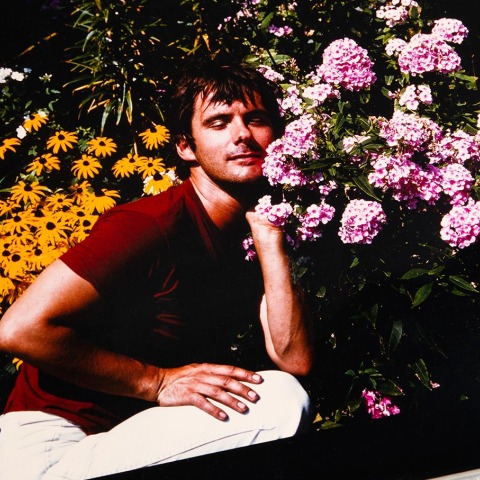The Gordon Matta-Clark collection—comprised of writings, photographs, films, correspondence, and select artworks donated to the CCA by the Estate of Gordon Matta-Clark—is a fundamental repository of documents and materials connected to finished projects and unrealized pieces. While Matta-Clark’s works were a clear product of his time and environment, the themes he addresses in relation to architecture and urbanism—neglect and speculation, questions of access, corporatization and gentrification, history and memory—are as relevant now as ever.
As part of the CCA´s broader strategy to use its holdings to challenge and redefine the role of architecture today, the Out of the Box format invites three guest curators to explore a specific part of the collection and produce three exhibitions opening up unexplored avenues of inquiry and new critical interpretations. Taken together, these readings, which will also be published in a book in 2020 and further explored in a related round-table seminar, will act as a tridimensional argument about Matta-Clark´s thought and art processes.
On view between June 2019 and September 2019 the exhibitions are the tangible result of a research program with curators Yann Chateigné, Hila Peleg and Kitty Scott, who have been invited to produce different thematic interpretations contributing and expanding the study of the Matta-Clark´s practice, using the CCA collection as an active tool, with design bu Belgium-based graphic designer Joris Kritis.
In the first exhibition, opening 6 June and titled Material Thinking, curator and art historian Yann Chateigné reflects on the North-American artist’s work through the lens of his highly diverse personal library and sheds light on lesser-known aspects of his practice.
Matta-Clark’s material thinking, stemming from a constellation of unexpected sources, brings together divergent areas of interest while still following particular lines of thought. Criss-crossing the histories of architecture, magic, cognitive science, network theory, anthropology, and ecology, the artist’s library invites an exploration of the hidden aspects of a continuous research process that is reflected in his considerable writing practice and the constant flux of visual investigations through photographs and drawings, as well as in sketches and drafts of concepts for proposed projects.
Through a reversed process that doesn’t simply refer to the documentation of finished works, Chateigné´s research and exhibition reveals a new system of themes and references that lie behind the radical critique of architecture that the artist unfolded during his decade of works; rather than reifying his collaborative process and merely exploring the artist´s visual production, the show highlights the physical, psychological, and conceptual processes behind it.
As part of the CCA´s broader strategy to use its holdings to challenge and redefine the role of architecture today, the Out of the Box format invites three guest curators to explore a specific part of the collection and produce three exhibitions opening up unexplored avenues of inquiry and new critical interpretations. Taken together, these readings, which will also be published in a book in 2020 and further explored in a related round-table seminar, will act as a tridimensional argument about Matta-Clark´s thought and art processes.
On view between June 2019 and September 2019 the exhibitions are the tangible result of a research program with curators Yann Chateigné, Hila Peleg and Kitty Scott, who have been invited to produce different thematic interpretations contributing and expanding the study of the Matta-Clark´s practice, using the CCA collection as an active tool, with design bu Belgium-based graphic designer Joris Kritis.
In the first exhibition, opening 6 June and titled Material Thinking, curator and art historian Yann Chateigné reflects on the North-American artist’s work through the lens of his highly diverse personal library and sheds light on lesser-known aspects of his practice.
Matta-Clark’s material thinking, stemming from a constellation of unexpected sources, brings together divergent areas of interest while still following particular lines of thought. Criss-crossing the histories of architecture, magic, cognitive science, network theory, anthropology, and ecology, the artist’s library invites an exploration of the hidden aspects of a continuous research process that is reflected in his considerable writing practice and the constant flux of visual investigations through photographs and drawings, as well as in sketches and drafts of concepts for proposed projects.
Through a reversed process that doesn’t simply refer to the documentation of finished works, Chateigné´s research and exhibition reveals a new system of themes and references that lie behind the radical critique of architecture that the artist unfolded during his decade of works; rather than reifying his collaborative process and merely exploring the artist´s visual production, the show highlights the physical, psychological, and conceptual processes behind it.

































![Matta-Clark, Gordon Office Baroque, 4th Floor [Documentació de l'acció "Office Baroque" realitzada el 1977 a Anvers, Bèlgica] 1977 Fotografia a les sals de plata 25,3 x 20,3 cm Col·lecció MACBA. Fundació Museu d'Art Contemporani de Barcelona. Dipòsit Col·lecció LATA Matta-Clark, Gordon Office Baroque, 4th Floor [Documentació de l'acció "Office Baroque" realitzada el 1977 a Anvers, Bèlgica] 1977 Fotografia a les sals de plata 25,3 x 20,3 cm Col·lecció MACBA. Fundació Museu d'Art Contemporani de Barcelona. Dipòsit Col·lecció LATA](/sites/default/files/styles/mopis_home_news_category_slider_desktop/public/lead-images/ml4147_mg_8986.jpg?h=8b2a012f&itok=v0X8-j5Z)
![Gordon Matta-Clark Office Baroque [Documentation of "Office Baroque" 1977 in Anvers, Belgium] Col·lecció MACBA. Fundació MACBA. Col·lecció LATA © Estate of Gordon Matta Clark, VEGAP, Barcelona, 2012. Photography: Vanessa Miralles Gordon Matta-Clark Office Baroque [Documentation of "Office Baroque" 1977 in Anvers, Belgium] Col·lecció MACBA. Fundació MACBA. Col·lecció LATA © Estate of Gordon Matta Clark, VEGAP, Barcelona, 2012. Photography: Vanessa Miralles](/sites/default/files/styles/mopis_home_news_category_slider_desktop/public/lead-images/ml_mattaclark_01_1024_p.jpg?h=3b4e7bc7&itok=VLk9w6-z)





